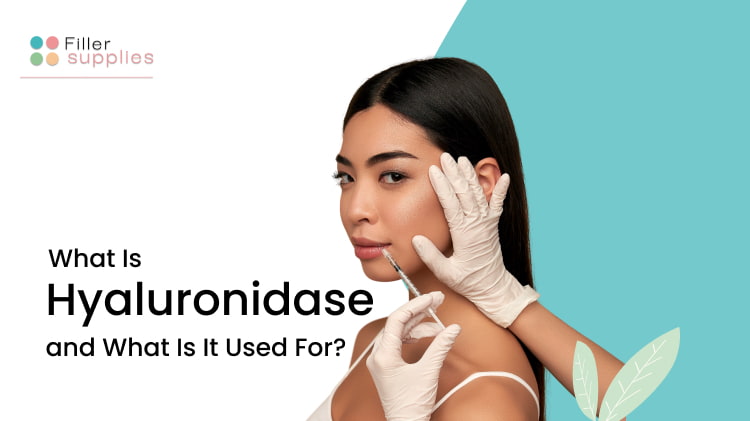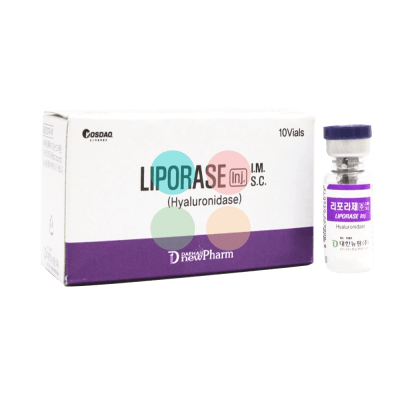What Is Hyaluronidase and What Is It Used For?

These days, more than 10 million people undergo cosmetic injections in the U.S. each year. Indeed, injectable procedures that involve botulinum toxin or hyaluronic acid-based dermal fillers are becoming extremely popular worldwide, as they can profoundly rejuvenate and enhance a patient’s appearance.
However, unprofessionally performed cosmetic injections might lead to such unsatisfactory results as granulomas, lumps, edemas, or other skin problems. If it is a hyaluronic acid shot that has resulted in the above-mentioned symptoms, the way out will be to inject hyaluronidase. Check out this article to know more.
Please note: To minimize the possibility of difficulties from hyaluronic acid shots, you will have to pay attention to the two factors, namely: the professionalism of a health care practitioner and the quality of the injected preparation. So, make sure to order medications from reliable suppliers only.
What Is Hyaluronidase?
 |
 |
| $129 | $259 |
In simple terms, hyaluronidase is defined as a special type of genetically designed protein (enzyme) that has the power to lower the viscosity of hyaluronic acid (which is the main element of the extracellular matrix). It is oftentimes added to a wide range of medical and cosmetic pharmaceuticals to perform a number of functions.
There exist several types of hyaluronidases that might be found in the human body, namely:
- HYAL1;
- HYAL2;
- HYAL3;
- HYAL4;
- HYAL5;
- HYAL6 (which is also known as HYALP1).
As well, hyaluronidase substances might be classified into:
- Acid-active hyaluronidases;
- Neutral-active hyaluronidases.
All the above-mentioned types of hyaluronidase enzymes have their own characteristics and peculiarities.
In most cases, pharmaceuticals that are based on hyaluronidase should be delivered into the human body by means of subcutaneous injection (please take into account that the substance should in NO way be administered as an intravenous injection).
Please note: The process of injecting hyaluronidase has to be performed by a knowledgeable health care practitioner only.
What Is Hyaluronidase Injection Used For?
The usage of hyaluronidase might be divided into two main groups, namely: medical and cosmetic (or, as it is also referred to, aesthetic). In both cases, the administration of the substance is characterized by the following advantages:
- It is quick;
- It is painless;
- It is effective (the administration of hyaluronidase guarantees a 100% result);
- It is low-traumatic for the skin;
- It is safe.
Please note: To minimize the possibility of allergic reactions, undesired drug interactions, or unpredicted local injection site reactions after the hyaluronidase administration, a doctor should investigate your individual health condition beforehand. During this investigation, let your health care practitioner know if you are currently on a certain antibiotic treatment that might affect hyaluronidase or are expected to have any allergic complications to certain preparations.
Now, let’s check out how might the substance be applied in both medical and cosmetic cases.
Medical Application of Hyaluronidase
The main reason why hyaluronidase is employed in medicine is that it is capable to increase the absorption and dispersion of drugs. While being able to lower the viscosity of hyaluronic acid (which might be naturally found in the human body), hyaluronidase increases the permeability of the human tissue. Therefore, the injected drugs are absorbed and distributed within the human body in a quick and efficient way.
Therefore, there is a number of medical hyaluronidase applications. Here is the list of the main ones:
- In general medical practice. Hyaluronidase is sometimes used to accelerate the speed of cold or allergy medicine absorption;
- In chemotherapeutics. Hyaluronidase is injected together with the chemotherapeutic substance to increase its penetration into the malignant tissue;
- In ophthalmology. Hyaluronidase is administered together with retrobulbar anesthesia during the ophthalmic surgery;
- In chronic pain management. In combination with a local anesthetic, hyaluronidase might be injected subcutaneously directly into the area of pain (such as joint or tendon);
- In X-ray investigation. During some specific types of x-ray scans, hyaluronidase is able to contrast dyes within the human body and, therefore, make them clearly visible;
- Etc.
Thus, hyaluronidase is an efficient substance with a wide range of medical applications.
Cosmetic Application of Hyaluronidase
Another widely-spread application of hyaluronidase is its involvement in aesthetic medicine. Namely, it is hyaluronidase that helps to degrade hyaluronic acid after HA-based dermal filler injections.
Thus, hyaluronidase is oftentimes applied after the administration of hyaluronic acid fillers to treat:
- Granulomas;
- The Tyndall effect (which is characterized by the unnatural coloration of skin tissues);
- Necrosis;
- Hypercorrection;
- Lumps;
- Edemas;
- Asymmetry;
- In case a foreign body is felt under a patient’s skin;
- Etc.
Moreover, hyaluronidase might also be used if a patient has decided to get rid of a dermal filler injection result without waiting for it to disappear on its own.
Are you interested in Botox? Then you should read our Botox Danger Zones article and learn some very useful information.
A side note: The usage of hyaluronidase is the ONLY alternative to surgery when it comes to reversing or correcting unwanted or dangerous effects of injections of dermal fillers.
Here is how the injection of hyaluronidase looks like:
- Firstly, a health care practitioner investigates a patient’s health condition to make sure that the administration of the preparation is safe;
- Secondly, a topical anesthetic is applied to the treatment area;
- Thirdly, hyaluronidase is administered in small doses (on average, this process lasts up to 30 minutes);
- Finally, a health care practitioner disinfects the treatment area, massages it, and applies healing cream to it.
As well, you might receive some doctor’s instructions after the procedure is over. Please make sure to follow them attentively.
A side note: Due to the fact that hyaluronidase is antigenic, a large amount of the substance that is administered in a form of repeated injections might lead to the formation of neutralizing antibodies.
A Bottom Line
All in all, hyaluronidase is a substance that is able to lower the viscosity of hyaluronic acid molecules. Therefore, it has a number of medical and cosmetic applications. For instance, a hyaluronidase injection helps your body absorb medications more efficiently (a medical application). At the same time, it degrades hyaluronic acid after a dermal filler treatment.
So, please keep in mind that there is “a way out” if you need to reverse the result of unprofessional dermal filler injection, rely only on professional health care practitioners with original preparations, and stay beautiful at all times!
